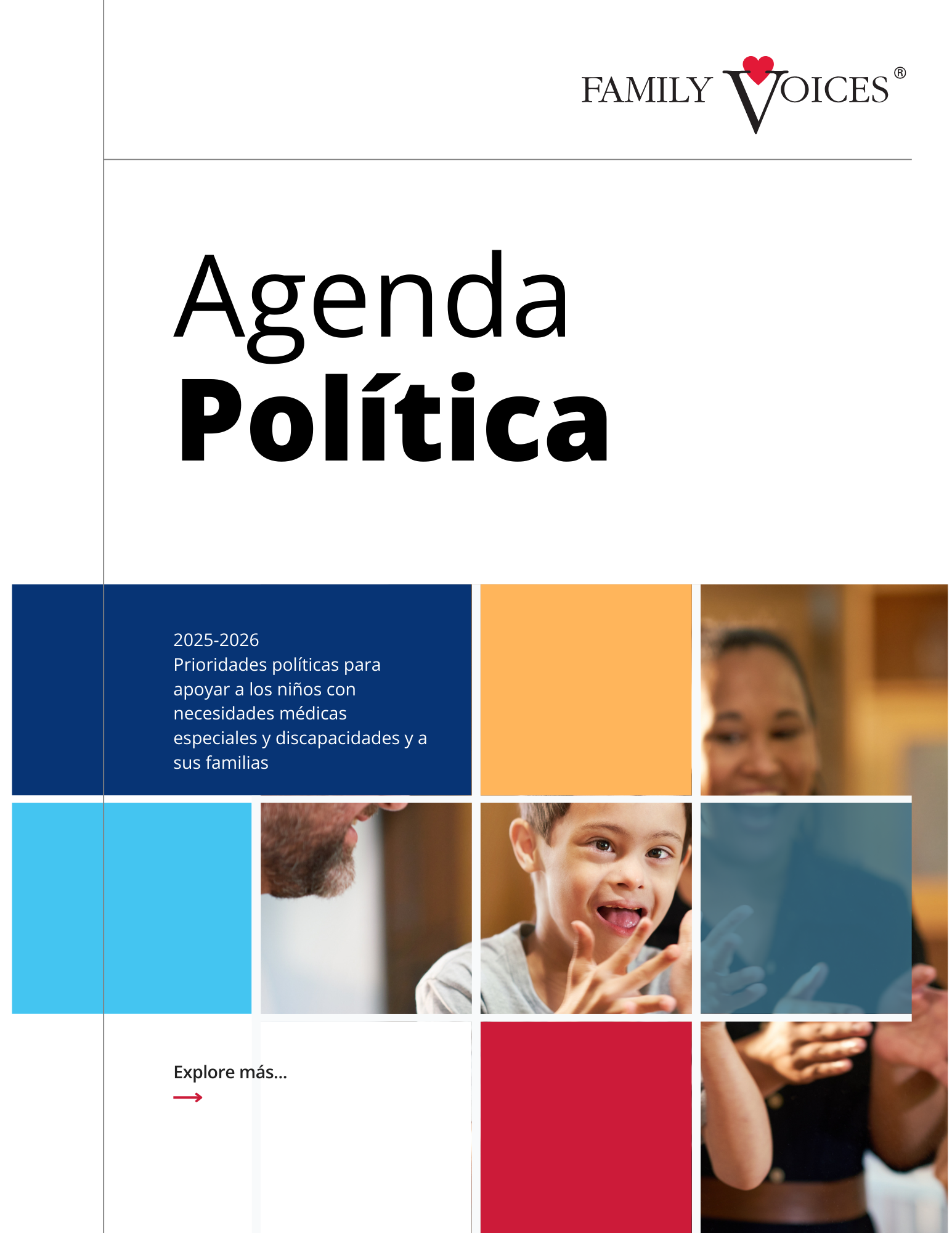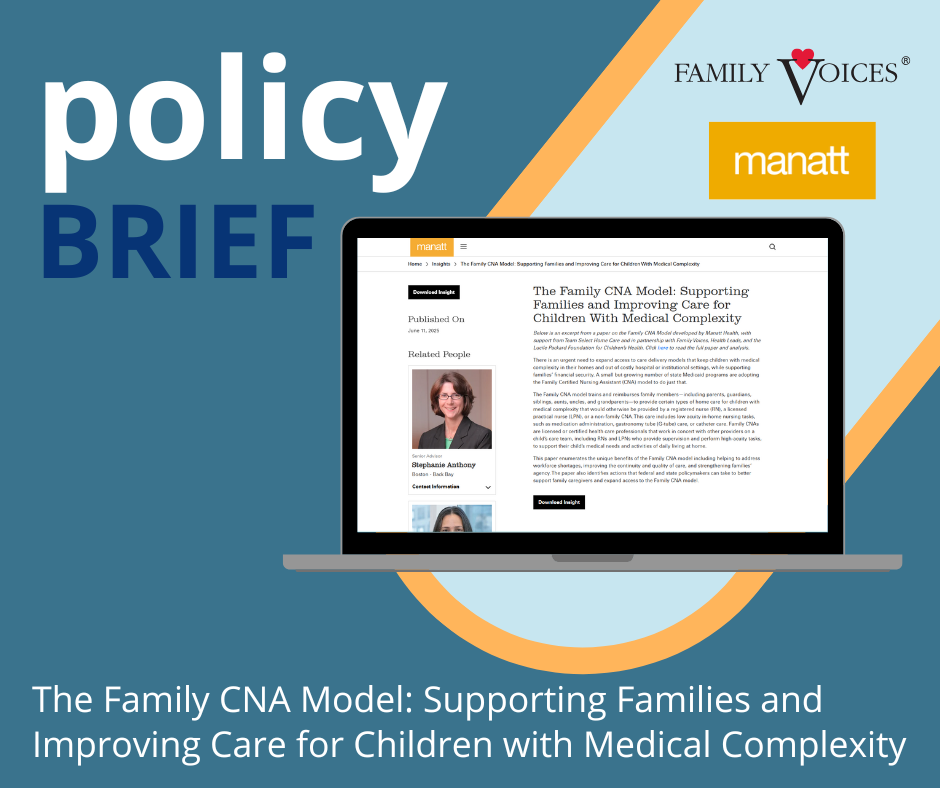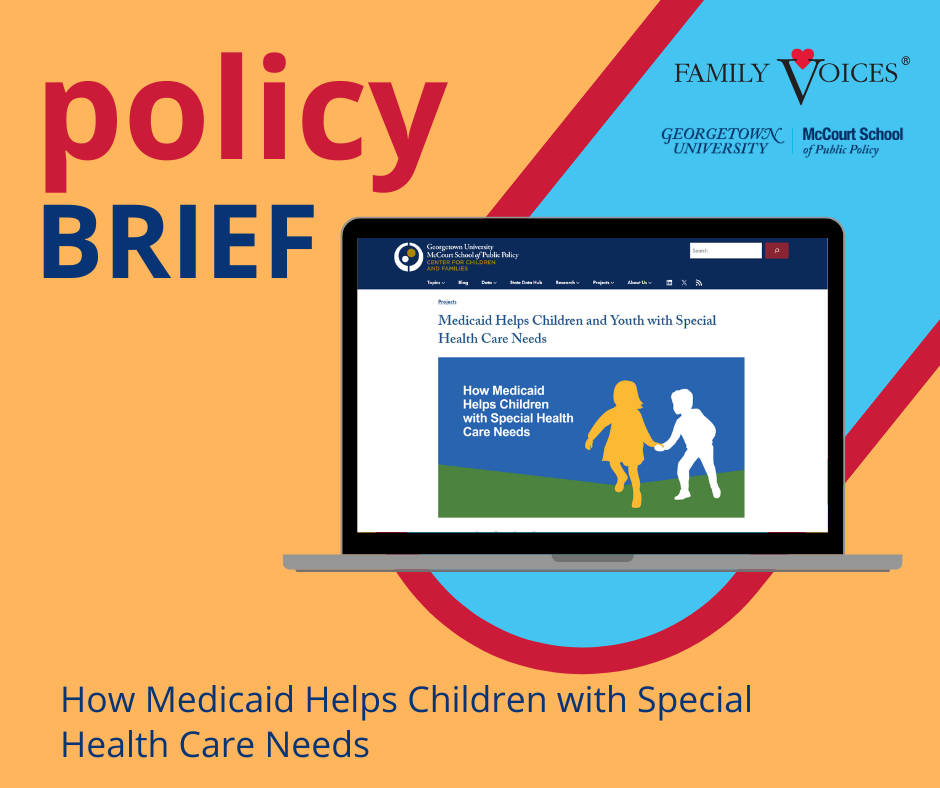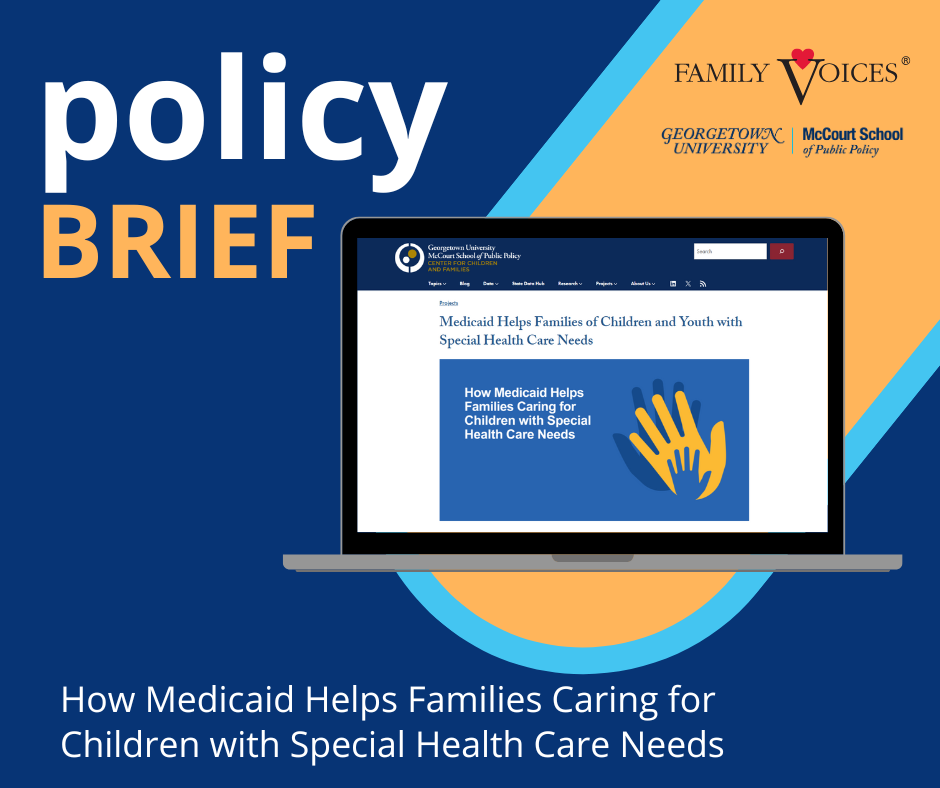
Public Policy
Policy Priorities to Support Children with Special Health Care Needs and Disabilities and Their Families
Our Strategic Policy Priorities
Children and youth with special health care needs and disabilities, and their families, face systemic barriers and biases that impede their ability to experience their best possible lives. Systems of care do not respond to their needs holistically or facilitate access to supports that enhance their quality of life.
To make the most impact, we focus our policy actions across all levels of government – federal, state, and local. We work with our family and organizational partners to lean on the various levers of policy change through education and advocacy.
Our current policy agenda includes:
- Expand access to peer-to-peer support for families of children and youth with special health care needs
- Support and expand Medicaid coverage for children and youth with special health care needs and their families and caregivers
- Improve the transition to adult health care for youth and young adults with disabilities and their caregivers and families
- Eliminate language access barriers
Family Voices collaborates with national child health and disability organizations, such as the Consortium for Citizens with Disabilities, The Arc, Autism Speaks, the American Academy of Pediatrics, and other groups.
Recent Policy-Related News
Washington Update February 9, 2022
“Money is the opposite of the weather. Nobody talks about it, but everybody does something about it.” – Rebecca Johnson The Budget: Let’s hope that Congress is doing a lot of talking about the weather AND budget! As the February 18th deadline for the temporary...
Washington Update January 26, 2022
No Go on Voting Rights and Election Reforms While the legislation did not pass last week, there is a small group of Senators turning last week's discussions into momentum for a narrower bipartisan effort to reexamine the 1887 law that governs how Congress counts...
Washington Update January 19, 2022
“Our lives begin to end the day we become silent about things that matter.”- Martin Luther King Jr. This King quote is something that we live by as families in the care of our loved ones and as family leaders in efforts to bring about systems change. While 2022 has...
Washington Update January 13, 2022
Happy New Year! Both houses of Congress are back in session this week after a Holiday break. Build Back Better is… no one is sure what it is or where it stands. Is it alive? Is it dead? It appears that Build Back Better (BBB) is on “pause” now as committees turn to...
Washington Update December 14, 2021
This week in Washington, Congress will be tied up with the National Defense Authorization Act and voting to raise the debt ceiling - among many other things. Build Back Better (BBB) is…still being built. Many steps in the building process still remain to be completed....
Legislation
The legislation tracked below is for informational purposes only. It is not meant to be an endorsement for or against the legislation. Action updates may occur daily, if actions are taken by Congress. Newly introduced legislation will be added weekly.
The legislative tracker is sorted by latest action. To navigate this page, you can scroll through just as you would a normal webpage. You can also click Ctrl+F on your keyboard and type in the search box.
For additional information and to read the full text (if available), click the highlighted bill number. You can also navigate to Congress.gov and search using key terms or phrases, or the bill numbers listed below.






